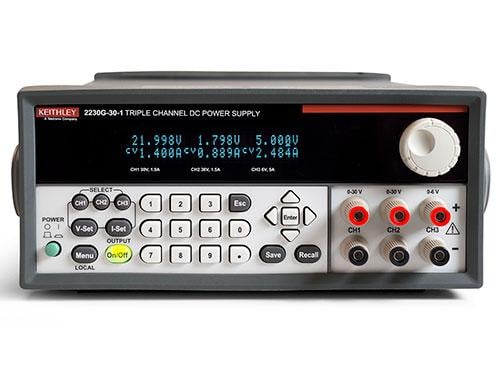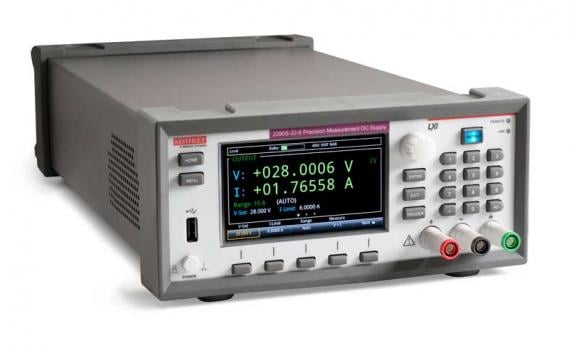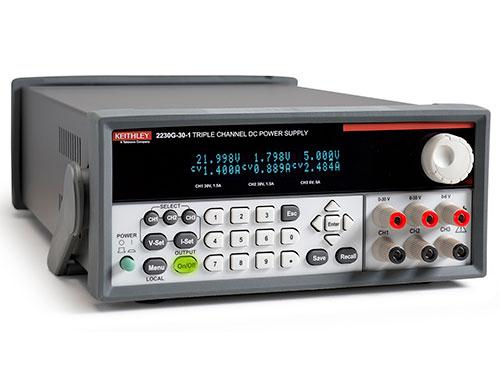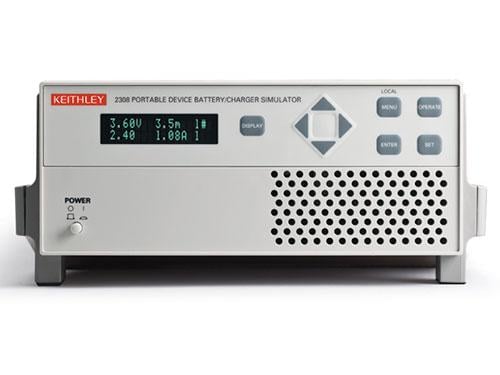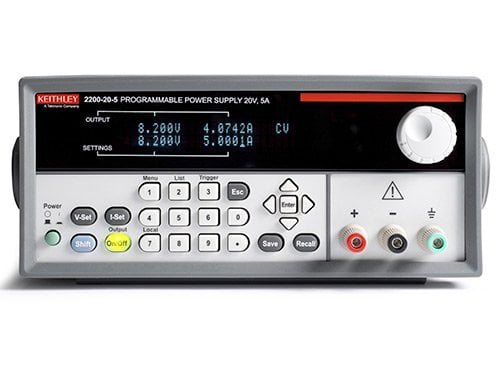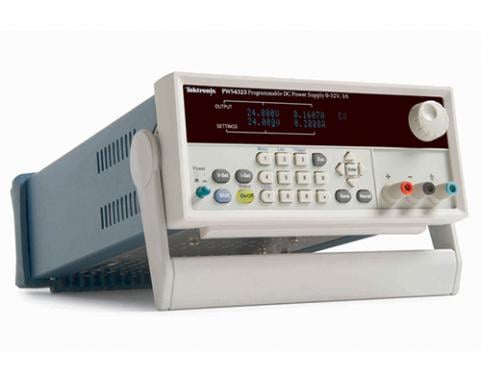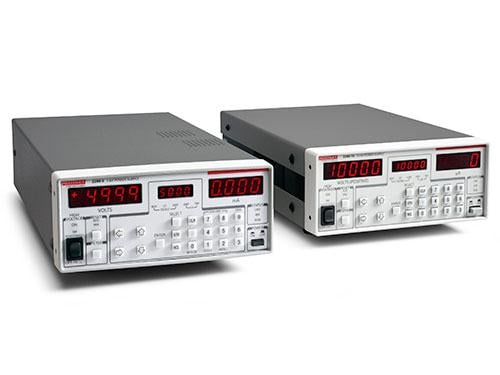

A benchtop DC power supply is a standard piece of test and measurement equipment used by electrical engineers and circuit designers to power and test their circuit system designs in the lab and in the field. But what exactly does it do and how can you find the right bench power supply for your application? We’ll cover all that and more.
- Why do you need a bench power supply?
- Bench power supply types
- How to choose the right bench power supply
- How to use a bench power supply
- Recommended bench power supplies
- Testimonials of popular bench power supplies
What is a Bench Power Supply?
A bench power supply provides DC (direct current) voltage to power a device under test such as a circuit board or electronic product. A bench or lab power supply typically sits on an engineer’s work area or bench, hence the term “bench power supply”. In this short video, one of our Keithley experts provides a quick overview of a bench power supplies.
Basics of Bench Power Supplies
Why do you need a Bench Power Supply?
When an engineer or circuit designer needs to test a device, typically known as a device under test (DUT), they need to power it with a set voltage or current. Bench power supplies allow engineers to set and supply specific voltages to power the DUT to confirm that the device is working as intended. If it’s not, they can troubleshoot and test again.
Shop Bench Power SupplyBench Power Supply types
Though there are many types of benchtop power supplies, these instruments are broadly segmented into three categories: single vs. multi-channel, bipolar vs. unipolar and linear vs. switching power supplies.
Single vs. multi-channel power supplies
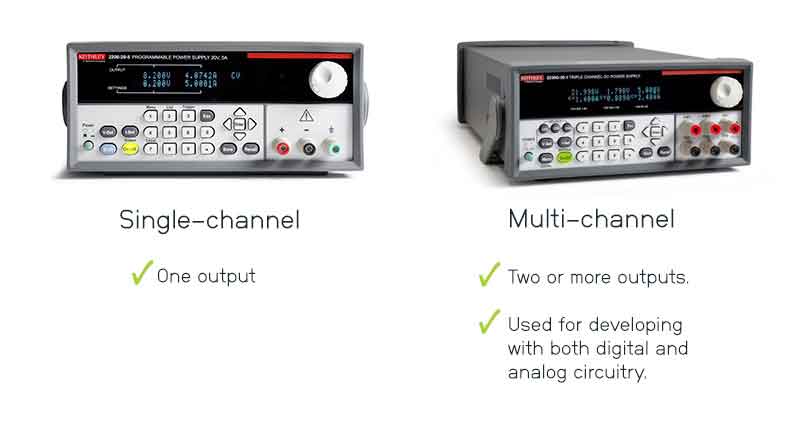
As the name might suggest, a single channel power supply has one output that can be controlled whereas a multiple channel power supply has two or more outputs. Multi-channel power supplies are typically used for developing devices with both digital and analog circuitry or bipolar circuitry.
Bipolar vs. unipolar power supplies
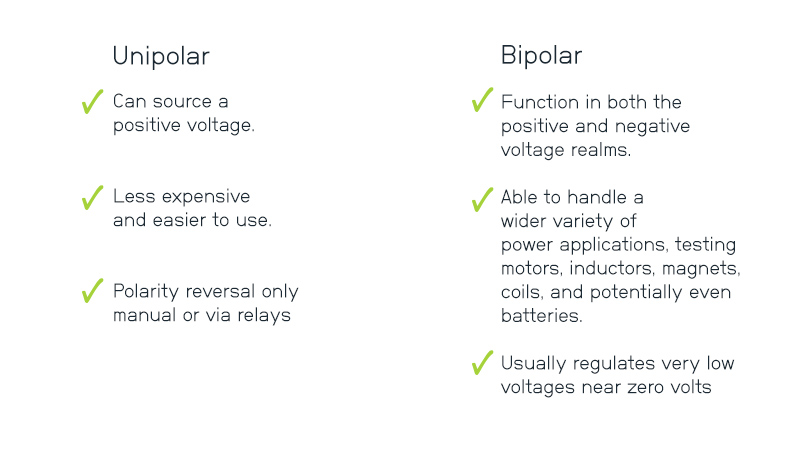
A unipolar power supply is only able to source a positive voltage. An engineer can technically switch the leads attached to the power supply to source a negative voltage, but bipolar power supplies function in both the positive and negative voltage realms. Bipolar supplies are able to handle a wider variety of power applications, but they’re more expensive and complex to use, so many engineers choose a unipolar power supply for DC power applications.
Linear vs. switching power supplies

A linear power supply is able to deliver high-accuracy measurements with very low noise and little signal interference. However, they are typically heavier, larger in size and deliver less power with less efficiency. Switching power supplies, on the other hand, are more compact and deliver more power, but tend to have high-frequency noise and less accurate measurements. A switching power supply is often used when power density is an issue—as you can get significantly higher wattage with a low footprint—whereas a linear power supply is used when an application requires powering delicate analog circuitry.
How to choose the right bench power supply
Choosing the appropriate power supply and developing a deeper understanding of its functions and features allows engineers to run tests faster and make more precise measurements in the lab. There are a number of factors to consider when purchasing a bench power supply, but these are the most important.
- Consider a programmable power supply
- Select a bench power supply with the correct power limits
- Choose a bench power supply with remote sense voltage monitoring
- Find a bench power supply with the appropriate response time
Manually setting voltage values and current limits can be a waste of valuable time when running long or complex tests. Thankfully, most bench power supplies come with a test sequence feature that allows for a basic level of programmability. Using the test sequences feature, an engineer can program voltage values, current limit values and time per step. This is a simple way to run a complex test with multiple pre-defined output voltages and timings without manually adjusting the settings on a power supply, allowing the operator more time to focus on getting quality measurements.
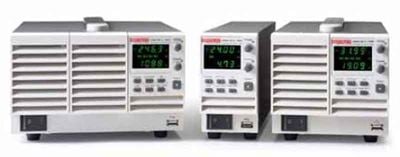
Very often, DC power supplies are categorized by their maximum voltage and maximum current. This is incredibly helpful information when it comes to finding the right power supply, but don’t forget to look at power limits as well.
For example, the 2260B-30-72 can supply up to 30 V or 72 A, but it has a power limit of 720 W. This means that the power supply can source 30 V, but not at 72 A as it would be power limited. With this formula, engineers can determine the power generated:

In most cases, if the power calculated from this equation is lower than the power limit of the bench power supply, it should be able to operate normally
For the most accurate voltage sourcing, it’s advisable to use a bench power supply that comes equipped with a remote voltmeter or remote sense. This allows for a clean voltage reading at the DUT rather than at its input terminals by compensating for voltage drop along the test leads. Considering that most standard ~3-foot test leads have a resistance of ~50 mΩ (~100 mΩ for a pair), there can be considerable voltage drop on the leads when using a low-resistance DUT.
If you are running tests with rapidly changing voltages or loads, response time is critical. Response time is how long it takes the power supply to ramp up (rise time) or ramp down (fall time) to a set voltage. Keep in mind that this will often vary with load.
Rise time is given as the time taken for the power supply to go from 10 percent of the value to 90 percent of the value. Fall time is the reverse, detailing the amount of time it takes to go from 90 percent of the value to 10 percent.
Transient recovery time is the duration of time needed for a power supply to return to its set level after a load is applied. A more complex parameter to univocally present as specification, it is usually described with a few parameters: the voltage settling band, the transient recovery time and the step change in load current. For example, the Keithley 2200 series bench power supplies have the following load transient recovery time spec, “<400 μs to within 75 mV following a change from 0.1 A to 1A.” This means that, if the current load was to change from 0.1 A to 1 A (step change in load current), the power supply will get to within 75 mV of the set voltage (voltage settling band) in less than 400 μs (the transient recovery time).
How to use a Bench Power Supply
A bench power supply is very simple to use. These instruments connect to a DUT via leads that are inserted into the instrument panel. Using the front panel display, engineers can set voltages or current levels to power the DUT. Most bench power supplies can operate in two modes: constant voltage and constant current.
Operating in constant voltage (CV) and constant current (CC) mode
An important function in a benchtop power supply is the ability to operate in constant current (CC) and constant voltage (CV) modes. In CV mode, the power supply regulates the output voltage based on the user settings. In CC mode, the power supply regulates the current. A power supply has different specifications that apply when it is in CV or CC mode, which is dictated by the user settings and resistance of the load. At any given time, either voltage or current is being regulated by the power supply and matches the setting within the instrument’s accuracy.
In CV mode, the output voltage matches the voltage setting within the accuracy specifications of the instrument. The current is determined by the impedance of the load.
In CC mode, the output current matches the current limit setting. The voltage is determined by the impedance of the load.
You can determine these values using Ohm’s Law, which is below. If you’re trying to be extra careful, include the test leads in your resistance

Running power supplies in parallel and series operation
If your tests require more power, you can connect multiple bench power supplies in parallel or in series to increase the available voltage or current.

Series operation: To increase the voltage, connect the positive output of one power supply to the negative output of another, then connect the remaining positive and negative outputs to the DUT.
Parallel operation: To increase the current, connect both positive outputs to one terminal of the DUT and both negative outputs to the other terminal of the DUT.
Just be sure to read the power supply’s instruction manual if using the remote sense feature while combining outputs. It may not be possible in certain configurations or if using two different power supplies.
Find the Best Benchtop or Special Purpose Power Supply for your application
For more information about bench power supplies, view our bench power supply selector guide or browse our collection of DC power supplies. Or to get help choosing the right bench power supply for your application, contact the experts at Tektronix.




